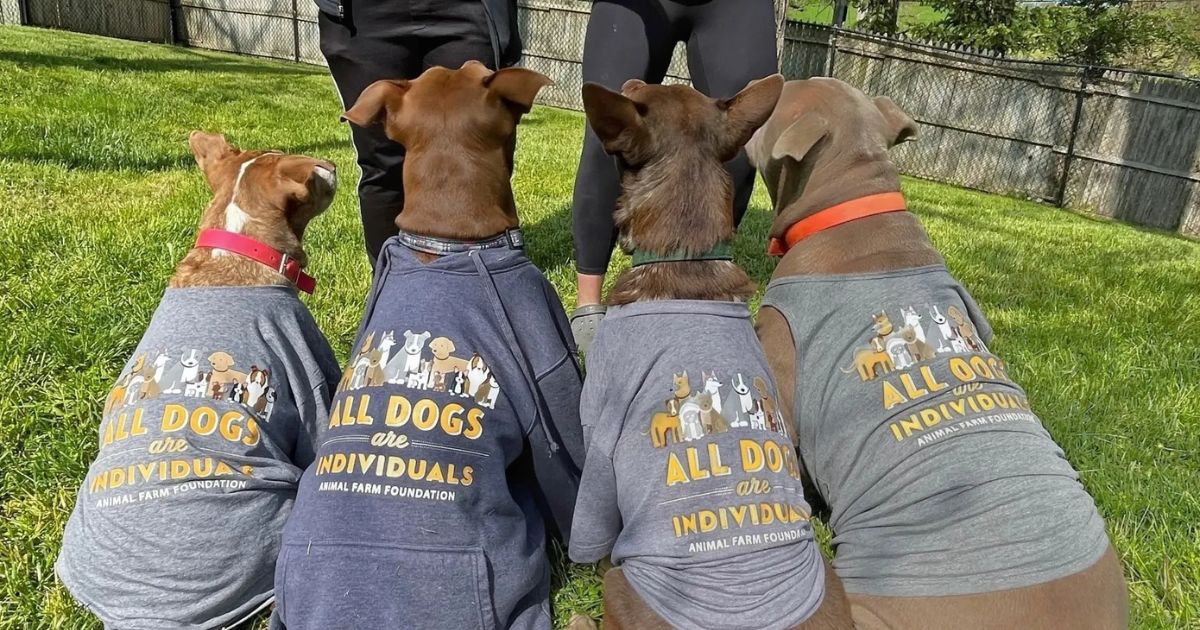"It ain't what you don't know that gets you into trouble. It's what you know for sure that just ain't so." — Mark Twain
In animal sheltering, Mark Twain’s wisdom hits home. Our biggest challenges often come not from what we don’t know, but from being completely certain about things that simply aren’t true. Sadly, these “facts”, built on a dog’s appearance, where we think they came from, or a single moment in time, can become barriers that unfairly limit a dog’s chances.
This is why words matter so much in our work. The language we use shapes how potential adopters, community members, lawmakers, and the media see animals and situations. As a community of caring professionals, we have the opportunity to challenge myths and advocate for an approach based on science, individual assessment, and each dog’s true potential.
The Danger of "Myths and Legends"

We’ve all met them: dogs who completely defied their initial labels, rewriting their own stories through patience, understanding, and a chance at a real life. These “myths and legends” stories highlight the profound impact our assumptions can have, for better or worse.
Take Scar Face, a dog who got his name from the mark across his muzzle.
During a group training class, when a shelter manager tried pushing him through an agility tunnel, Scar Face made contact with the manager’s arm — no injury, just contact. That single moment was enough. Scar Face was labeled dog-aggressive (due to his scar), human-aggressive (contact with the manager’s arm), and headed for euthanasia.
But assumptions aren’t facts. When he was taken into a foster home — renamed Sammy — this “aggressive” dog showed who he really was. He loved other dogs, thrived on hiking adventures, and adored meeting new people. Sammy was adopted by a family in Pennsylvania with multiple dogs, sheep, children, and farm animals. The “dangerous” dog with the scarred face became a beloved family member.
Facts Over Fear
Princess’s story teaches us the importance of putting facts over fear. She was a tiny black dog rescued from a dog fighting cruelty case (this was years before the Michael Vick case brought national attention to these situations). About 50 other dogs from that case were euthanized after evaluation. A rescue took Princess but quickly returned her, reporting that she was “the most dog-aggressive dog” they’d ever encountered. They said their quick actions prevented injuries to other dogs.
But when Princess arrived at her next placement, staff watched her carefully. Despite the scary label, Princess seemed dog-friendly. After a week, they decided to let her interact with another dog in the yard. Even with the handler’s nervousness and the other dog’s high energy, Princess just wanted to play. They tested her with female dogs, then groups, then small dogs and children.

Every interaction showed the same thing: Princess was a social, friendly dog who had been completely misunderstood. She eventually went home with two little boys and spent the rest of her life attending doggie daycare.
Evidence over Assumptions
Similarly, the story of Cindy illustrates the power of seeking evidence rather than accepting assumptions. She spent four years in a shelter due to an inaccurate label. She was designated “dog- and cat-aggressive and people-selective,” with no explanation for these severe labels.
When new leadership took over the shelter and investigated, they found no evidence for Cindy’s mythology beyond a single handwritten note from an Animal Control Officer (ACO). This note stemmed from a highly stressful and traumatic situation where Cindy was found abandoned in a hotel room with a deceased dog and several cats. The ACO assumed Cindy was responsible for the other dog’s death and aggression toward the cats. A single, unsubstantiated note had led to four years of Cindy being overlooked and deemed nearly unplaceable.

After being given a chance to join playgroups at the shelter, staff observed that Cindy was “bossy” but not aggressive, and she peacefully walked past community cats. Cindy was adopted a few months after the new team’s investigation uncovered the truth.
You can read more about Cindy’s story and how words matter in Animal Farm Foundation’s Words Matter language guide.
Breaking Down the Walls of Assumption
Sammy, Princess, and Cindy are not isolated cases. They are powerful reminders that assumptions are frequently made based on:
- What a dog looks like: Breed stereotypes and physical traits often lead to biased interpretations of behavior.
- Where the dog is from: A dog’s origin, whether a particular living situation or a specific background, can unfairly predetermine expectations.
- Something someone thinks they saw: A single, isolated incident, or even a misinterpretation of an interaction, can lead to a definitive and often negative label.
The words we use to describe dogs living in a shelter directly impact how they are perceived. We need to think carefully about how our words might be perceived and the potential they have to influence our audiences.
For High-Volume Shelters or those with Limited Resources
When you can't get to know every dog individually, consider these strategies:
- Foster field trips: Even short-term foster experiences (a few hours to a few days) can reveal a dog’s true personality outside the stressful shelter environment and provide valuable behavioral information
- Implement playgroups: Programs like Dogs Playing for Life help reveal dogs’ true social skills and personalities through structured group play, providing valuable behavioral insights without formal testing
- Remove breed labels: Animal Farm Foundation offers support to help shelters eliminate breed labels, which can reduce bias in behavioral assessments
- Focus on observable behaviors: Use the ASPCA’s behavior pathway resources to make consistent, evidence-based decisions about which dogs need immediate attention
- Volunteer observers: Train volunteers to spend time with dogs and document specific behaviors rather than applying broad labels
- Staff training: Even basic training on observational language and assumption awareness can dramatically improve outcomes with existing resources
A Note on Shelter Environment
It’s crucial to remember that shelter environments are inherently stressful. Dogs may exhibit behaviors in kennels that don’t reflect their true personalities or home behavior. A dog who seems “shut down” might simply be overwhelmed. A dog who appears “aggressive” might be exhibiting barrier frustration or fear-based responses that won’t occur in a home setting.
As the National Canine Research Council notes, what we observe in shelters may not accurately predict how dogs will behave in homes. The context matters enormously, and our assumptions about shelter behavior need to account for the impact of environment and stress.
Breaking the Assumption Cycle
So how do we move beyond assumptions to truly see individual dogs for who they are?
- Focus on Observable Behavior, Not Labels: Instead of deciding a dog is “aggressive,” describe what you actually see: “This dog growled when approached quickly” or “This dog showed tension when another dog came close to his food bowl.” Observations are facts; interpretations are assumptions.
- Give Dogs Multiple Opportunities: One interaction — especially in a stressful environment — doesn’t define a dog’s entire personality. Like Princess, dogs deserve chances to show different aspects of themselves in various contexts.
- Separate History from Reality: A dog’s background provides useful context, but it shouldn’t predetermine their future. Each dog is an individual who may defy expectations based on their past experiences.
- Question Your “Certainties”: When you find yourself absolutely sure about a dog’s behavior or prognosis, pause. Ask what evidence supports that conclusion and whether you might be missing something.
- Use Positive Framing in Marketing: As we’ve discussed in previous posts about marketing versus adoption counseling and thoughtful marketing for dogs with behavior challenges, how we present dogs shapes adopter perceptions. Even dogs with complex needs deserve to be seen as individuals first.
The Cost of Assumptions
-
Missing great matches
Potential adopters may never meet a dog because of labels that don't reflect reality
-
Creating self-fulfilling prophecies
Treating a dog as if they're dangerous or difficult can actually increase stress and problematic behaviors
-
Losing lives
Dogs may be euthanized based on assumptions rather than individual assessments
-
Perpetuating myths
Our assumptions about certain types of dogs can reinforce harmful stereotypes in our communities
Every Dog Deserves to Be Seen
Sammy, Princess, and Cindy aren’t miraculous exceptions, they’re reminders that every dog is a complex individual who deserves to be seen for who they truly are, not who we assume them to be. Behind every scar, every backstory, every moment of fear or frustration in a kennel, there’s a dog waiting for someone to look past the assumptions and see their real self.
The next time you’re absolutely certain about a dog (when you “know for sure” who they are based on their appearance, history, or a single behavioral moment) remember Mark Twain’s wisdom. Challenge your certainties. Look deeper. Give that dog a chance to surprise you.

Because in animal sheltering, what we think we know for sure about a dog’s character, potential, or future might just be the very thing keeping them from finding their family. And that assumption could be the difference between a dog like Sammy spending his life on a farm with children and animals, Cindy finding her home after four years of unnecessary confinement, or never getting the chance to show the world who they really were.
Sometimes the most dangerous thing in a shelter isn’t the dog everyone’s afraid of — it’s the assumption that we already know everything we need to know about them.






